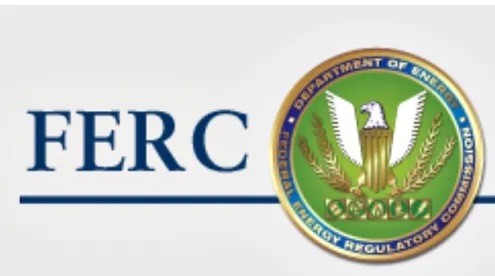The Federal Energy Regulatory Commission (“FERC” or “Commission”) issued a landmark final rule, Order No. 2222, at its September 17, 2020 open meeting that aims to remove barriers for distributed energy resources (“DER”) to participate in wholesale markets regulated by FERC through aggregators. As defined by FERC, DER is “any resource located on the distribution system, any subsystem thereof or behind a customer meter.”[1] DER, thus, refers to resources that provide electricity near the point of use as opposed to centralized generation sources from utility-scale power plants that are often interconnected directly to the transmission system. These resources are often small and include electric storage resources, distributed generation, demand response, energy efficiency, thermal storage, and electric vehicles and their supply equipment.[2] Order No. 2222 builds on the Commission’s efforts in Order No. 841, FERC’s seminal order on energy storage recently upheld by the D.C. Circuit in July of 2020.[3]
While FERC’s definition of DER is intended to be “technology-neutral,” most DER, specifically distributed generation, being developed today predominately relies on renewable energy sources such as solar energy that is commonly used in rooftop solar systems. Furthermore, advances in electric storage technology are leading to increasing installations of electric storage on distribution systems. The ability for DER, however, to market electricity has largely been limited to state-approved retail programs such as net metering. Current rules in FERC-regulated wholesale markets restrict most DER from participating due to their smaller size. Order No. 2222 adopts a number of reforms that should enable smaller DER to participate in wholesale markets through DER aggregators. These reforms likely will result in material and accelerated changes to wholesale markets and likely will likely have a profound effect on the expansion and integration of DER into the electrical grid by providing these resources with additional commercial opportunities.[4]
The reforms adopted by FERC in Order No. 2222 specifically apply to RTOs and ISOs that are regulated by FERC and operate wholesale markets, which include capacity, energy, and ancillary services markets. The RTOs and ISOs included in the scope of the final rule are: California Independent System Operator Corporation, ISO New England, Inc., Midcontinent Independent System Operator, Inc., New York Independent System Operator, Inc., PJM Interconnection, L.L.C., and Southwest Power Pool, Inc. Markets in the Pacific Northwest, Mountain West, the Southeastern United States and ERCOT, where RTOs and ISOs subject to FERC’s jurisdiction do not exist, will not be subject to Order No. 2222’s requirements.
Order No. 2222 builds upon the significant reforms adopted by FERC in Order No. 841 where the Commission directed RTOs and ISOs to revise their tariffs to establish a new participation model that recognizes the physical and operational characteristics of electric storage resources to facilitate the participation of these resources in centralized markets.[5] When it issued Order No. 841, FERC limited its applicability to electric storage resources and prohibited each RTO/ISO from establishing a minimum size threshold above 100 kW for electric storage participation in the centralized markets operated by RTOs and ISOs. Order No. 841 deferred establishing any requirements in connection with aggregation of DER that the RTOs and ISOs may consider to be “too small” to participate in the wholesale markets directly and, instead, issued a Notice of Technical Conference in Docket No. RM18-9-000 to support FERC’s consideration of possible future reforms for DER aggregation.[6] Accordingly, Order No. 2222 is the direct result of FERC’s initiatives in Order No. 841 and its follow-on activities such as the Technical Conference.
In Order No. 2222, FERC found that “existing RTO/ISO market rules are unjust and unreasonable in light of barriers that they present to the participation of [DER] aggregations in the RTO/ISO markets, which reduce competition and fail to ensure just and reasonable rates,”[7] and that “the rules governing participation in those markets are designed for traditional resources and in effect limit the services that emerging technologies can provide,”[8] which includes DER. FERC found, for example, that DER “tend to be too small to meet the minimum size requirements to participate in the RTO/ISO markets on a stand-alone basis, and may be unable to meet certain qualification and performance requirements because of the operational constraints they may have as small resources.” FERC further stated that existing participation models for aggregated resources, including DER, in RTO/ISO markets often require those resources to participate as demand response, which “limits their operations and the services that they are eligible to provide.”[9] FERC concluded that “[a]ggregations of new and existing [DER] can provide new cost-effective sources of energy and grid services and enhance competition in wholesale markets as new market participants.”[10]
To address these barriers to participation by DER aggregators in RTO/ISO markets, Order No. 2222 requires each RTO/ISO to revise its tariff to establish DER aggregators as a type of market participant that can register DER aggregations under one or more participation models in the RTO/ISO tariff that accommodate the physical and operational characteristics of each distributed energy resource aggregation.[11]
Specifically, FERC orders each RTO/ISO to revise their tariffs to:
-
Allow DER aggregations to participate directly in RTO/ISO markets and establish DER aggregators as a type of market participant;
-
Allow DER aggregators to register DER aggregations under one or more participation models that accommodate the physical and operational characteristics of DER aggregations;
-
Establish a minimum size requirement for DER aggregations that does not exceed 100 kW;
-
Address locational requirements for DER aggregations;
-
Address distribution factors and bidding parameters for DER aggregations;
-
Address information and data requirements for DER aggregations;
-
Address metering and telemetry requirements for DER aggregations;
-
Address coordination between the RTO/ISO, the DER aggregator, the distribution utility, and the relevant electric retail regulatory authorities;
-
Address modifications to the list of resources in a DER aggregation;
-
Address market participation agreements for DER; and
-
Accept bids from a DER aggregator if its aggregation includes distributed energy resources that are customers of utilities that distributed more than 4 million megawatt-hours in the previous fiscal year.[12]
One significant issue that FERC addressed in its final rule was whether it has jurisdiction to order the reforms of RTO/ISO markets pertaining to DER aggregation considering that DER is not directly tied to transmission facilities over which FERC has jurisdiction and DER themselves are often associated with consumers that are traditionally regulated by states and local governments as opposed to the federal government. FERC found that its authority to issue regulations pertaining to DER aggregations “stems from both the Commission’s jurisdiction over the wholesale sales by [DER] aggregators into RTO/ISO markets and from its jurisdiction over practices affecting wholesale rates.”[13] While challenges to FERC’s jurisdiction to compel the adopted reforms by RTOs and ISOs are likely, FERC’s decision to limit the scope of the reforms to DER aggregators in RTO/ISO markets as opposed to more expansively attempting to regulate DER directly significantly strengthens the Commission’s jurisdictional grounds based on recent precedent.[14] FERC referenced the consistency of its holding with the U.S. Supreme Court’s decision in FERC v. Electric Power Supply Ass’n, 136 S. Ct. at 774-84, “which interpreted the [Federal Power Act (“FPA”)] as providing the Commission with jurisdiction over the participation in RTO/ISO markets of demand response resources: a type of non-traditional resource that, by definition, is located behind a customer meter and generally is located on the distribution system.”[15] Importantly, as Order No. 2222 emphasized, “the reforms adopted in this final rule do not preclude or limit state or local regulation of: retail rates; distribution system planning, distribution system operations, or distribution system reliability; distributed energy resource facility siting; and interconnection of resources to the distribution system that are not subject to Commission jurisdiction,” and electric retail regulatory authorities are “able to condition a [DER]’s participation in a retail [DER] program on that resource not also participating in the RTO/ISO markets.”[16]
In confirming its jurisdiction, FERC clarified that if a DER aggregator only aggregated demand resources or aggregated only customers in a net metering program that are not net sellers, then DER aggregators would not be public utilities subject to FERC’s jurisdiction.[17] However, and significantly, FERC concluded that DER aggregators that make sales of electric energy into RTO/ISO markets will be considered a public utility subject to the Commission’s jurisdiction.[18] Accordingly, such DER aggregators must fulfill certain responsibilities set forth in the Federal Power Act (“FPA”) and FERC’s rules and regulations. This includes:
-
Filing rates under FPA Section 205 and having FERC make such rates effective prior to making any such sales into RTO/ISO markets – a requirement that could be satisfied by FERC accepting a DER aggregator’s market-based rate schedule and request for market based rate authority;
-
Filing Electric Quarterly Reports;
-
Submitting FPA Sections 203 and 204 filings related to corporate mergers and other activities; and
-
Fulfilling FPA Section 301 accounting obligations and FPA section 305(b) interlocking directorate obligations.[19]
Order No. 2222 also noted that its decision to regulate DER aggregators selling into RTO/ISO markets as FERC-jurisdictional public utilities did not extend to an exercise of jurisdiction over the individual resource holders and that “an individual distributed energy resource’s participation in a distributed energy resource aggregation would not cause that individual resource to become subject to requirements applicable to Commission-jurisdictional public utilities.”[20]
Regarding compliance and implementation by RTOs and ISOs, Order No. 2222 requires each RTO/ISO to file the necessary tariff revisions to implement the requirements of the final rule within 270 days of the publication date of Order No. 2222 in the Federal Register.[21] Furthermore, given the complexity of changes to RTO/ISO market rules and systems ordered by FERC, the Commission elected to not impose the proposed one-year deadline from the compliance filing date to implementing the revisions that each RTO/ISO files in compliance with Order No. 2222 as FERC originally proposed. Rather, FERC ordered that each RTO/ISO propose a reasonable implementation date, together with adequate support explaining how the proposal is appropriately tailored for its region and implements Order No. 2222 in a timely manner.[22]
Given that Order No. 2222’s directives generally do not prescribe specific tariff language that each RTO/ISO must include in their respective tariffs, it is foreseeable that Order No. 2222 may take several rounds of compliance filings by each RTO/ISO similar to RTO/ISO compliance with Order No. 841 that gave each RTO/ISO flexibility to implement electric storage participation reforms. Thus, compliance and implementation of Order No. 2222’s reforms may take several years to realize. Once implemented, however, these reforms should result in critical changes for the development of both DER and RTO/ISO markets.
[1] Participation of Distributed Energy Resource Aggregations in Markets Operated by Regional Transmission Organizations and Independent System Operators, Order No. 2222, 172 FERC ¶ 61,247, at P 114 (2020).
[2] Id.
[3] Nat’l Ass’n of Regulatory Util. Comm’rs v. FERC, 964 F.3d 1177 (D.C. Cir. 2020). In Order No. 841, FERC sought to improve the ability of energy storage resources to participate alongside traditional generation resources in Regional Transmission Organization (“RTO”) and Independent System Operator (“ISO”) capacity, energy, and ancillary service markets. See generally Electric Storage Participation in Markets Operated by Regional Transmission Organizations & Independent System Operators, Order No. 841, 162 FERC ¶ 61,127, at P 78 (2018), order on reh’g, Order No. 841-A, 167 FERC ¶ 61,154 (2019), aff’d sub nom. Nat’l Ass’n of Regulatory Util. Comm’rs v. FERC, 964 F.3d 1177 (D.C. Cir. 2020).
[4] Demand response is “a reduction in the consumption of electric energy by customers from their expected consumption in response to an increase in the price of electric energy or to incentive payments designed to induce lower consumption of electric energy.” Id. P 2 n.8 (citing 18 C.F.R. § 35.28(b)(4) (2019)).
[5] Order No. 841, 162 FERC ¶ 61,127 (2018).
[6] See Notice of Technical Conference, Docket Nos. RM18-9-000 and AD18-10-000 (2018).
[7] Order No. 2222 at PP 1, 26.
[8] Id. P 2.
[9] Id.
[10] Id. P 27.
[11] Id. P 6.
[12] Id. P 8. FERC, however, clarified that “RTO/ISO must not accept bids from a distributed energy resource aggregator if its aggregation includes distributed energy resources that are customers of utilities that distributed 4 million megawatt-hours or less in the previous fiscal year, unless the relevant electric retail regulatory authority permits such customers to be bid into RTO/ISO markets by a distributed energy resource aggregator.” Id.
[13] Id. P 39 (citing Nat’l Ass’n of Regulatory Util. Comm’rs v. FERC, 964 F.3d at 1186).
[14] Nat’l Ass’n of Regulatory Util. Comm’rs v. FERC, 964 F.3d at 1187; FERC v. Electric Power Supply Ass’n, 136 S. Ct. 760, 774-84 (2016).
[15] Order No. 2222 at P 41.
[16] Id. P 61.
[17] Id. P 42.
[18] Id.; see EnergyConnect, Inc., 130 FERC ¶ 61,031, at P 29 (2010) (finding an aggregator of retail customers to be a public utility under FPA section 201(e) because its agreements to make sales of balancing energy for resale in RTO/ISO markets would constitute jurisdictional facilities under FPA section 201(b)).
[19] Order No. 2222 at P 42 & n.94.
[20] Id. P 43.
[21] Id. P 360.
[22] Id. P 361.





 />i
/>i

